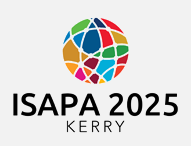Start Date
18-6-2025 12:30 PM
End Date
18-6-2025 2:00 PM
Abstract
Introduction
Children with mild intellectual disabilities are prone to health problems caused by a lack of exercise, such as obesity, hyperlipidaemia, hypertension and diabetes. Therefore, they need to develop health literacy and acquire physical fitness and exercise capacity to be able to play sports throughout their lives. This study aimed to clarify the relationship of health literacy with physical fitness and exercise capacity among students with mild intellectual disability.
Methodology
The target population was 845 students with intellectual disabilities from upper secondary schools for special needs in Japan. The survey assessed health literacy (HLS-Q12), and physical fitness and motor skills (an eight-item test standardized in Japan).χ-square test and residuals analysis were used to examine whether there were differences in the proportion of physical fitness and exercise capacity levels by high and low groups of participants with health literacy in ‘health care’, ‘disease prevention’ and ‘health promotion’.
Results
Only a few students with high levels of literacy in ‘health care’ and ‘health promotion’ had low levels of physical fitness and exercise capacity. However, no association was observed between literacy in ‘disease prevention’ and physical fitness and exercise capacity.
Conclusions
The results indicate that acquiring health literacy in ‘health care’ and ‘health promotion’ may be associated with improved physical fitness and motor skills among students with mild intellectual disability.
References
Nutbeam D. Health literacy as a public health goal: a challenge for contemporary health education and communication strategies into the 21st century. Health Promot Int. 2000,15, 259-267.
Recommended Citation
Watanabe, Takahiro; Kawata, Yujiro; Watari, Tadashi; and Odaka, Kunio, "The relationship of health literacy with physical fitness and exercise capacity among students with mild intellectual disabilities" (2025). International Symposium of Adapted Physical Activity and International Symposium on Physical Activity and Visual Impairment and Deafblindness. 45.
https://sword.mtu.ie/isapa/2025/day3/45
The relationship of health literacy with physical fitness and exercise capacity among students with mild intellectual disabilities
Introduction
Children with mild intellectual disabilities are prone to health problems caused by a lack of exercise, such as obesity, hyperlipidaemia, hypertension and diabetes. Therefore, they need to develop health literacy and acquire physical fitness and exercise capacity to be able to play sports throughout their lives. This study aimed to clarify the relationship of health literacy with physical fitness and exercise capacity among students with mild intellectual disability.
Methodology
The target population was 845 students with intellectual disabilities from upper secondary schools for special needs in Japan. The survey assessed health literacy (HLS-Q12), and physical fitness and motor skills (an eight-item test standardized in Japan).χ-square test and residuals analysis were used to examine whether there were differences in the proportion of physical fitness and exercise capacity levels by high and low groups of participants with health literacy in ‘health care’, ‘disease prevention’ and ‘health promotion’.
Results
Only a few students with high levels of literacy in ‘health care’ and ‘health promotion’ had low levels of physical fitness and exercise capacity. However, no association was observed between literacy in ‘disease prevention’ and physical fitness and exercise capacity.
Conclusions
The results indicate that acquiring health literacy in ‘health care’ and ‘health promotion’ may be associated with improved physical fitness and motor skills among students with mild intellectual disability.
References
Nutbeam D. Health literacy as a public health goal: a challenge for contemporary health education and communication strategies into the 21st century. Health Promot Int. 2000,15, 259-267.

